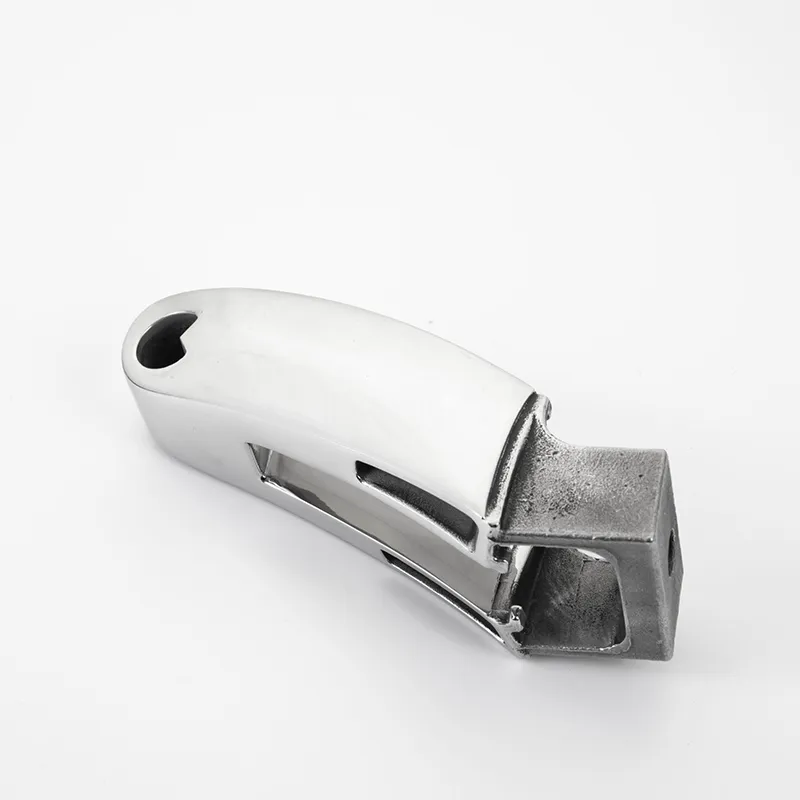Understanding Lost Wax Casting: A Timeless Manufacturing Technique
2024-09-21
Lost wax casting, also known as investment casting, is an ancient and highly precise manufacturing process used to create intricate metal components. This technique has been utilized for thousands of years, dating back to civilizations like Ancient Egypt and Mesopotamia, and is still widely employed in various industries today. In this blog, we’ll explore the fundamentals of lost wax casting, how it works, and why it remains a popular choice for creating detailed metal parts.
1. What is Lost Wax Casting?

Lost wax casting is a method of metal casting where a wax model of the desired object is created, covered in a ceramic or plaster mold, and then heated to melt the wax away. Molten metal is then poured into the cavity left by the wax, resulting in a highly accurate and detailed replica of the original model. This process can produce complex parts that are difficult or impossible to achieve using other casting methods.
The process involves several stages, which ensure precision and high-quality results, making it ideal for industries such as jewelry, aerospace, automotive, and art sculpture.
2. The Lost Wax Casting Process
The lost wax casting process involves several steps, each requiring attention to detail to ensure the final product meets design specifications:
- Model Creation: A model of the object is sculpted from wax. This model is an exact replica of the part to be cast in metal. Modern techniques often use 3D printing to create wax patterns for increased accuracy.
- Wax Tree Assembly: Multiple wax models can be attached to a central wax rod to form a "tree" structure, allowing for the casting of multiple parts in a single mold. This is commonly used for mass production.
- Investment and Molding: The wax model (or tree) is coated in a ceramic or plaster material, known as investment. The investment is built up in layers until it forms a solid mold around the wax model. Once dried, the mold is ready for the next step.
- Wax Removal: The mold is heated in a kiln, causing the wax to melt and drain out through special channels, leaving behind a hollow cavity in the shape of the model. This stage is where the term "lost wax" comes from, as the wax is sacrificed during the process.
- Casting: Molten metal (such as steel, aluminum, bronze, or gold) is poured into the mold, filling the cavity left by the wax. The metal cools and solidifies inside the mold, taking the shape of the original wax model.
- Final Steps: Once the metal has cooled, the ceramic mold is broken away, revealing the cast metal part. The part is then cleaned, finished, and inspected for quality. Any sprues (the leftover metal from the pouring process) are removed, and the final product is polished or machined as needed.
3. Benefits of Lost Wax Casting
Lost wax casting offers numerous advantages over other casting techniques, which is why it continues to be widely used today:
- Precision and Detail: The lost wax process can capture even the smallest details, making it ideal for creating intricate designs and highly detailed parts.
- Versatility: It can be used with a wide range of metals, including stainless steel, brass, aluminum, and precious metals like gold and silver.
- Complexity: Lost wax casting is capable of producing complex geometries and hollow parts, which would be difficult or impossible to achieve with other methods.
- Minimal Material Waste: The use of wax models allows for precise control over material usage, reducing the amount of metal wasted during the process.
- Customization: This method is highly customizable, allowing manufacturers to produce one-of-a-kind pieces or large production runs with consistent results.
4. Applications of Lost Wax Casting
Lost wax casting is used in a variety of industries, including:
- Jewelry: Creating intricate designs for rings, necklaces, and other jewelry pieces.
- Aerospace and Automotive: Producing precision components like turbine blades, engine parts, and gears.
- Art and Sculpture: Crafting detailed bronze sculptures and decorative items.
- Medical Equipment: Manufacturing surgical instruments and implants that require high precision.
Conclusion
Lost wax casting is a timeless and versatile manufacturing technique that continues to play a vital role in modern production processes. Its ability to create complex and detailed metal components with high accuracy makes it indispensable in various industries. Whether for creating jewelry, industrial parts, or art pieces, lost wax casting offers precision, flexibility, and efficiency that few other methods can match.


